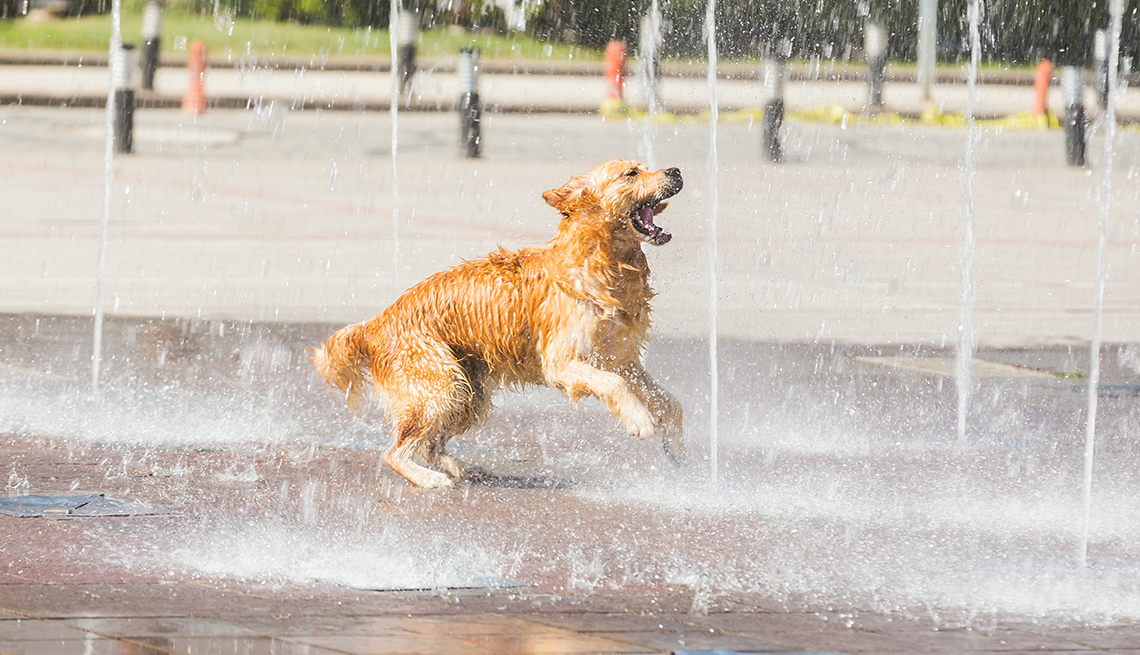
How to keep your dog cool and prevent heatstroke
- Select a language for the TTS:
- UK English Female
- UK English Male
- US English Female
- US English Male
- Australian Female
- Australian Male
- Language selected: (auto detect) - EN
Play all audios:

In some places this summer, going outside can feel like walking into an oven turned up to broil. And if humans feel that way as they venture out, furry pets feel it more. When faced with
sweltering weather, Amy Koepke, 59, of Osceola, Wisconsin, has given her golden retriever Teddy a crew cut, put ice in his water and trimmed down his walk time by 30 minutes in order to
make sure he doesn’t overheat as temperatures climb. “When it gets hot and humid, it definitely makes a difference,” Koepke says. “It really comes down to treating a dog how you want to be
treated.” As summer heat intensifies and many parts of the South are facing triple digit temperatures and heat warnings, pet owners themselves need to make sure they avoid heat stroke and
dehydration, but they also need to pay similar attention to their dogs to help keep them cool. Dogs cool themselves by panting. But panting becomes inefficient in extreme heat, during
physical exertion, when a dog is dehydrated, when there’s insufficient ventilation or due to a combination of those factors. Within minutes, a dog can become overheated, which can lead to
heat exhaustion, heatstroke, kidney failure, brain damage and even death, veterinarians say. FACTORS BEYOND TEMPERATURE Overheating is “producing body heat faster than the dog can
dissipate the heat into the environment,” says Michael Davis, who specializes in veterinary sports medicine at Oklahoma State University. When it comes to gauging the weather environment
for pets, temperature is critical, but humidity can be more important than temperature, Davis says. Seventy degrees with high humidity can be just as dangerous for your dog as 90 degrees
and low humidity, based on a heat index he helped create for military dog training. Getty Images A good rule of thumb: If it’s too hot for you, it’s too hot for your canine companion,
says Katie True, a veterinarian and medical director of Midtown Animal Hospital in Sacramento, California. However, this depends on the dog’s health, activity and acclimation to the climate,
she adds. Heatstroke may occur when a dog’s body temperature (normally around 101.5 degrees) rises to 106 degrees or higher. One of the most common causes of heatstroke for dogs is being
left in a hot vehicle without sufficient air flow. Never leave a dog alone in a car, especially in the summer, even with the windows partially open. As you walk your dog, remember that
ground surfaces like asphalt, sand and metal absorb heat from the sun and can burn the sensitive pads of paws. If you think these surfaces might be too hot, guide your dog to the grass or
avoid these areas until they cool down.
